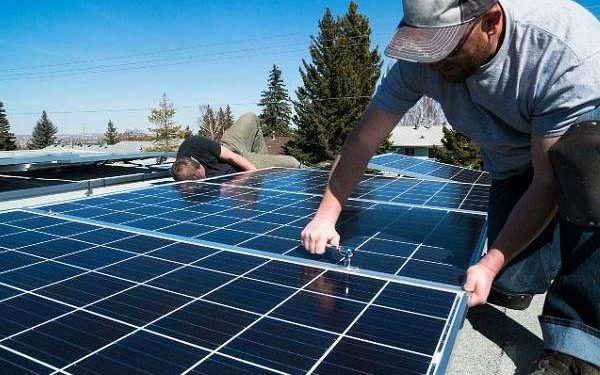Advanced material science enhances silicon solar cell efficiency
by Riko Seibo
Ishikawa, Japan (SPX) Mar 11, 2024
As global efforts to combat climate change intensify, advancements in solar energy technology have become crucial. Silicon heterojunction (SHJ) solar cells are at the forefront of these developments, promising high energy conversion efficiencies. The performance of these cells largely relies on the quality of the passivation layer-a thin film that plays a pivotal role in preventing the recombination of light-excited charge carriers, such as electrons.
The Japan Advanced Institute of Science and Technology (JAIST) has been pioneering in addressing the optimization of this crucial layer through catalytic chemical vapor deposition (Cat-CVD). This technique is noted for its gentle deposition process, which avoids substrate damage, a common issue with plasma-based methods. Yet, the challenge has been the complex set of variable parameters involved in Cat-CVD, such as substrate temperature, gas flow rates, and deposition time, making the quest for optimal conditions time-consuming and arduous.
A groundbreaking study published on February 21, 2024, in ACS Applied Materials and Interfaces, led by Professor Keisuke Ohdaira alongside co-authors Ryota Ohashi, Huynh Thi Cam Tu, Koichi Higashimine from JAIST, and Dr. Kentaro Kutsukake from RIKEN, introduced an efficient strategy to streamline this process. Their approach harnesses the power of Bayesian optimization (BO), a machine learning method adept at maximizing unknown functions, tailored to navigate the intricate variables of Cat-CVD.
Bayesian optimization operates by analyzing a set of known conditions and their outcomes, then predicting optimal conditions not yet tested. This iterative process gradually hones in on the most effective settings. However, applying BO to Cat-CVD is nuanced due to potential operational issues like excessive film thickness or unfeasible combinations of gas flow rates and equipment capacity.
To circumvent these hurdles, the team devised a “constrained BO” strategy, integrating three distinct predictive models. These models assessed the deposited film’s performance, deposition pressure based on gas inputs, and regulated film thickness concerning deposition time. Starting with an initial dataset of 14 samples, they achieved significant advancements in carrier lifetimes after just eight optimization cycles, with full optimization realized after twenty cycles. This method uncovered new parameter combinations previously unconsidered, notably linking substrate temperature and precursor gas flow rate to minimized carrier recombination.
The implications of this research extend beyond solar cell performance, illustrating the versatility of constrained BO in optimizing material processes critical in electronic device fabrication. This approach not only identifies optimal deposition conditions but also enriches scientific understanding, potentially impacting a broad spectrum of manufacturing processes and sustainable energy solutions.
Professor Ohdaira’s reflections on the study underscore its significance: “Our research not only streamlines the optimization of Cat-CVD parameters but also enhances the understanding of material properties essential for high-efficiency solar cells. This advancement is a leap forward in sustainable technology, offering insights that could revolutionize the production of electronic devices and contribute to global efforts against climate change.”
This breakthrough in material science and optimization heralds a new era in solar energy technology, promising improved efficiencies and a sustainable path forward in the fight against climate change. The work of JAIST researchers paves the way for broader applications of BO, highlighting its potential to unlock efficiencies in various fields, from electronic device manufacture to other renewable energy technologies.
Research Report:High Passivation Performance of Cat-CVD i-a-Si:H Derived from Bayesian Optimization with Practical Constraints
Related Links
Japan Advanced Institute of Science and Technology (JAIST)
All About Solar Energy at SolarDaily.com


















